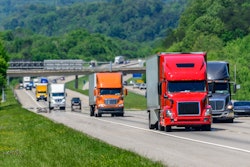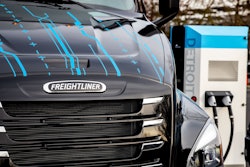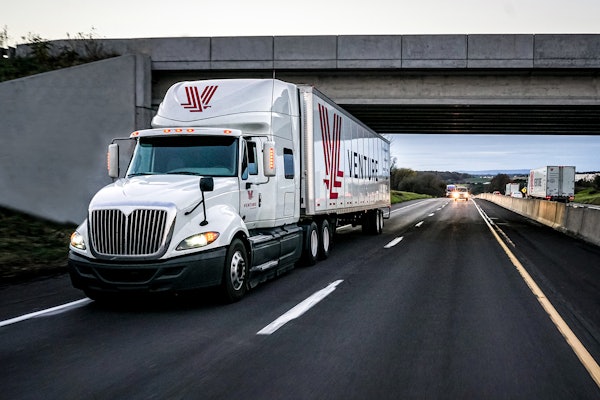I was reading the text of General Douglas McArthur’s 1951 farewell address to Congress. This is the famous “old soldiers never die; they just fade away” speech. Whatever you can say about McArthur, there is no argument that his retirement was unlike the typical office party most of us get with a sheet cake. Mac had the run of the House of Representatives and some Senators for over 35 minutes and delivered a 3,235-word speech. To put that in perspective, President Kennedy’s 1961 State of the Union speech to this same audience ran roughly 45 minutes.
I’m always looking for good quotes and a phrase in Mac’s speech jumped out at me. He ended a discussion of geopolitical environment with “…contemporary planning … must be thoughtfully considered if we are to avoid the pitfalls of unrealism.”
Pitfalls of unrealism. Is that a great description of where we are in the discussion of climate change? Where elements on one end of the spectrum are vigorously arguing that there are no worries and those on the other are equally energized that we are headed to a catastrophe?
A fundamental tenet of engineering is that you have to first measure something before you can improve it. The metric of choice on the debate over climate change is the rise in temperature. The immediate red flag is that the goal is stated in degrees centigrade, clearly not applicable to the United States, right? Then there are deadlines. If I can paraphrase from The Treasure of the Sierra Madre movie, “deadlines, we don’t need no stinkin’ deadlines.” Besides, aren’t they more like Jack Sparrow guidelines? Maybe about as permanent as Tesla’s next innovation launch date?
Let’s look at trucking. Nearly every report I read has the obligatory first paragraph describing just how bad trucking is as a result of if its disproportionate share of GHG emissions — like the trucking industry has a choice in driving more miles per vehicle than cars.
Remember not so long ago in the COVID pandemic days when we all decided that trucking was an essential industry? How quickly we forget. Freight has to move from supplier to consumer. That’s how we eat. Stop that supply chain and everyone comes out of the woodwork, right?
Freight movement is essential to us all. The miles freight moves are the metric that produces all the GHG emissions because, until recently, all that freight movement in North America was done by burning fossil fuels in internal combustion engines in trucks, locomotives, ships and airplanes. Those miles are, mostly, essential.
Car travel, on the other hand, is largely discretionary. You can choose not to drive today. There are alternatives available to you including walking, bicycles and public transit. The reality is that there are a lot more cars than trucks.
Trucks get singled out because they are the low hanging fruit in the discussion of the negative effects of burning fossil fuels to move vehicles. One truck may drive 60,000 to more than 120,000 miles per year doing its job, but there are only perhaps 12 million Class 3 through Class 8 trucks on the road. In total, the U.S. Bureau of Transportation Statistics assessed that single axle and combinations trucks in 2020 drove 300,000 million miles. Buses alone drove 305,000 million miles that year. Light-duty vehicles racked up in excess of 4,300,000 million miles.
Engineers love Pareto charts. Those are bar charts that highlight where the greatest opportunity is by prominently ranking them left to right. The BTS Pareto chart of miles driven by vehicle type since 2000 shows that light-duty vehicles win every year. Yet we tend to focus on trucks because they uniquely accumulate significant miles per vehicle moving all our necessities.
Math is not always a strong suit. Think about miles per year as if it is tax dollars. The U.S. has roughly 144 million taxpayers. Now if everyone pays $1 in taxes, the government has collected $144 million. But let’s say that the top 1% of taxpayers pay $100 in taxes. Well, the total is the same $144 million. So, let’s tax the rich and let everyone else off the hook?
The truck-to-car argument always has bothered me. A small improvement in cars has a massive effect because there are so many cars. Yet we tend to focus on trucks because each truck drives more miles than each car.
For more than two decades, the fuel economy standard of cars was stuck at 1990 levels. It’s only post 2010 that MPG requirements for cars and light-duty trucks has ratcheted up. The Alternative Fuels Data Center has this great graph of CAFÉ requirements for cars and light-duty trucks.
Trucks are easy targets for emissions reductions under the assumption that it is “easier” to make emissions reductions on a per vehicle basis. There are significantly fewer truck voters than car voters, as well. But like “tax the rich,” the burden for emissions reductions can be viewed as being applied to trucking disproportionality.
I live in the world of advocating for efficiency gains for freight haulers. That is my vested interest. So, I’m all over alternative fuels and zero-emission vehicles as improvements over traditional diesel fuels.
Improving the efficiency of using energy to move freight has parallel benefits of reducing both GHG and particulate emissions, which benefits people living near freight corridors and freight facilities. Improving freight efficiency also brings operating cost reductions — less dollars in energy used per mile driven.
Efficiency improvement is what in the theater world is called a triple threat — it can sing, dance and act. It reduces operating costs, improves the environment and it improves lives.
But even microscopic improvements to cars and light-duty trucks also can result in massive benefits due to the sheer quantity of cars and light trucks on the road. On a per mile basis, cars also tend to have shorter asset lives than trucks, so the technology in cars can evolve faster than that of trucks. The average lifespan of a car is reportedly 165,000 to 200,000 miles, or roughly 12 years. Truck life spans exceed 750,000 miles and it’s not unusual to see trucks operating commercially past 20 years in age, although with reduced annual duty cycle miles.
The point of all this is that trucks need continuous improvement, but so do cars and light-duty trucks. Like the taxpayer example, we need to make sure not to vilify the trucking industry because it is doing what we ask it to do: deliver all our freight, all the time. Yes, that comes with ramifications, but it remains essential and that is a backdrop we need to remember to avoid the pitfalls of unrealism.












